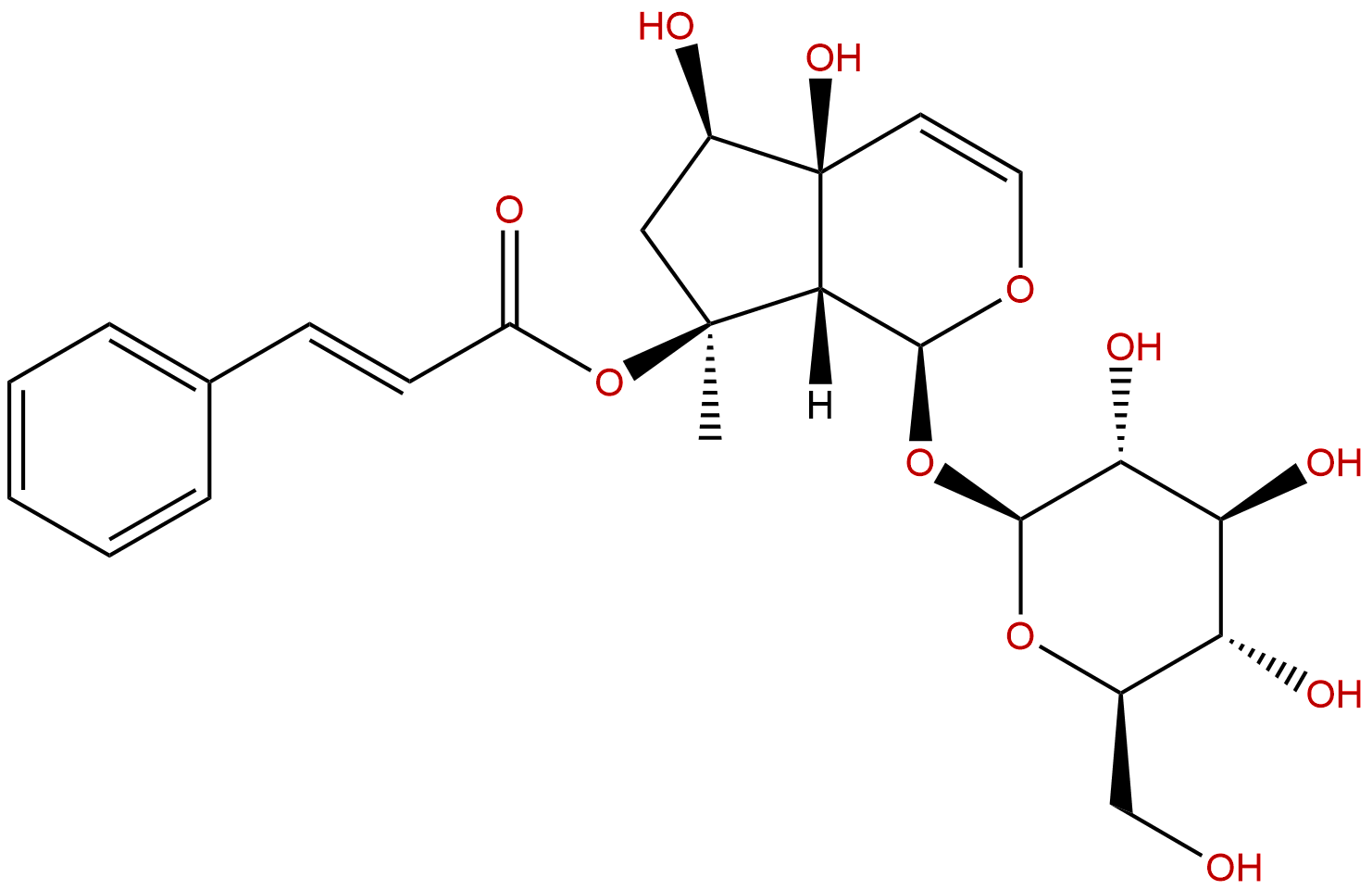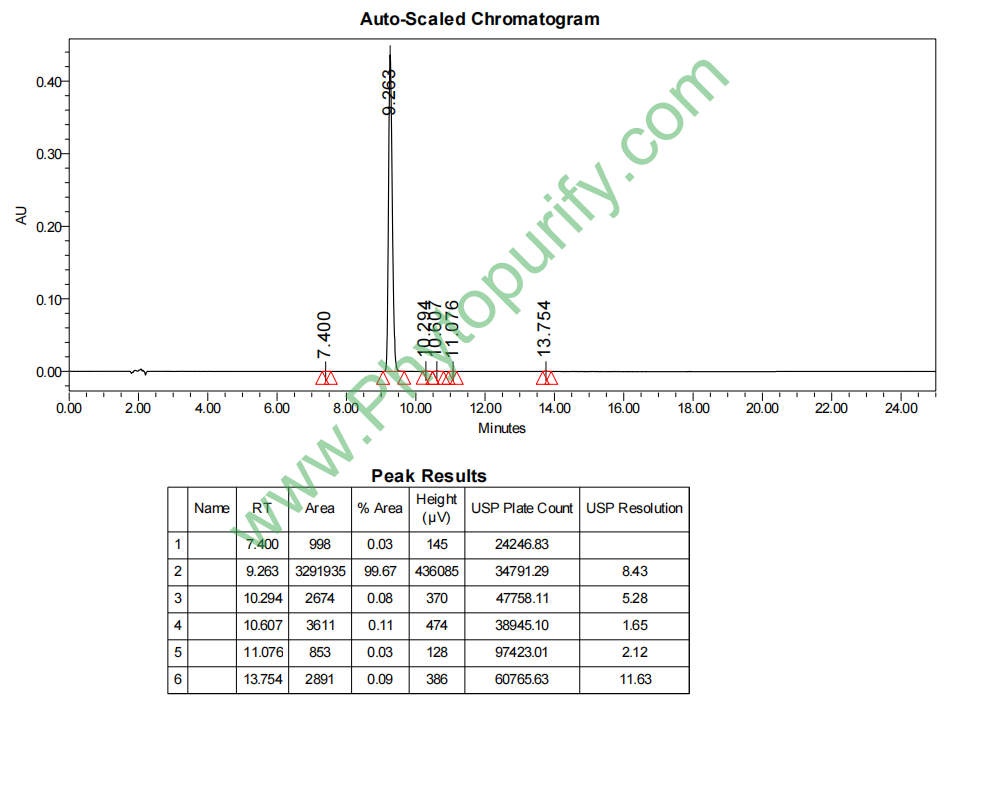
HarpagosideCAS No.:19210-12-9 |
||||||||||
 |
|
|
||||||||

| Catalogue No.: | BP0702 |
| Formula: | C24H30O11 |
| Mol Weight: | 494.493 |
| Botanical Source: | Scrophularia ningpoensis Hemsl. |
Synonym name:
Catalogue No.: BP0702
Cas No.: 19210-12-9
Formula: C24H30O11
Mol Weight: 494.493
Botanical Source: Melittis melissophyllum and Harpagophytum procumbens
Purity: 95%~99%
Analysis Method: HPLC-DAD or/and HPLC-ELSD
Identification Method: Mass, NMR
Packing: Brown vial or HDPE plastic bottle
Can be supplied from milligrams to grams.
For Reference Standard and R&D, Not for Human Use Directly.
Inquire for bulk scale.
Description:
Harpagoside has anti-inflammatory effects, it blocks lipopolysaccharide (LPS)-induced bone loss in an inflammatory osteoporosis model, and it does not prevent ovariectomy-mediated bone erosion in a postmenopausal osteoporosis model, it may lead to a partial prevention of obesity-induced atherosclerosis by attenuating inflammatory responses. Harpagoside suppresses lipopolysaccharide-induced iNOS and COX-2 expression through inhibition of NF-κB activation. Harpagoside exerts neuroprotection effect and ameliorates learning and memory deficit appears to be associated, at least in part, with up-regulation of brain-derived neurotrophic factor (BDNF) content as well as activating its downstream signaling pathways, e.g., MAPK/PI3K pathways.
References:
Cytokine, 2015, 76(2):368-74.
Inhibitory effects of harpagoside on TNF-α-induced pro-inflammatory adipokine expression through PPAR-γ activation in 3T3-L1 adipocytes.
Obesity is closely associated with increased production of pro-inflammatory adipokines, including interleukin (IL)-6, plasminogen activator inhibitor (PAI)-1, and adipose-tissue-derived monocyte chemoattractant protein (MCP)-1, which contribute to chronic and low-grade inflammation in adipose tissue. Harpagoside, a major iridoid glycoside present in devil's claw, has been reported to show anti-inflammatory activities by suppression of lipopolysaccharide (LPS)-induced production of inflammatory cytokines in murine macrophages. The present study is aimed to investigate the effects of Harpagoside on both tumor necrosis factor (TNF)-α-induced inflammatory adipokine expression and its underlying signaling pathways in differentiated 3T3-L1 cells.
METHODS AND RESULTS:
Harpagoside significantly inhibited TNF-α-induced mRNA synthesis and protein production of the atherogenic adipokines including IL-6, PAI-1, and MCP-1. Further investigation of the molecular mechanism revealed that pretreatment with Harpagoside activated peroxisome proliferator-activated receptor (PPAR)-γ.
CONCLUSIONS:
These findings suggest that the clinical application of medicinal plants which contain Harpagoside may lead to a partial prevention of obesity-induced atherosclerosis by attenuating inflammatory responses.
J Ethnopharmacol. 2006 Mar 8;104(1-2):149-55.
Harpagoside suppresses lipopolysaccharide-induced iNOS and COX-2 expression through inhibition of NF-kappa B activation.
Preparations of Harpagophytum procumbens, known as devil's claw, are used as an adjunctive therapy for the treatment of pain and osteoarthritis. Pharmacological evaluations have proven the effectiveness of this herbal drug as an anti-inflammatory and analgesic agent.
METHODS AND RESULTS:
The present study has investigated the mechanism of action of Harpagoside, one of the major components of Harpagophytum procumbens, using human HepG2 hepatocarcinoma and RAW 264.7 macrophage cell lines. Harpagoside inhibited lipopolysaccharide-induced mRNA levels and protein expression of cyclooxygenase-2 and inducible nitric oxide in HepG2 cells. These inhibitions appeared to correlate with the suppression of NF-kappaB activation by Harpagoside, as pre-treating cells with Harpagoside blocked the translocation of NF-kappaB into the nuclear compartments and degradation of the inhibitory subunit IkappaB-alpha. Furthermore, Harpagoside dose-dependently inhibited LPS-stimulated NF-kappaB promoter activity in a gene reporter assay in RAW 264.7 cells, indicating that Harpagoside interfered with the activation of gene transcription.
CONCLUSIONS:
These results suggest that the inhibition of the expression of cyclooxygenase-2 and inducible nitric oxide by Harpagoside involves suppression of NF-kappaB activation, thereby inhibiting downstream inflammation and subsequent pain events.
J Nat Prod. 2015 Sep 25;78(9):2167-74.
Harpagoside Inhibits RANKL-Induced Osteoclastogenesis via Syk-Btk-PLCγ2-Ca(2+) Signaling Pathway and Prevents Inflammation-Mediated Bone Loss.
Harpagoside (HAR) is a natural compound isolated from Harpagophytum procumbens (devil's claw) that is reported to have anti-inflammatory effects; however, these effects have not been investigated in the context of bone development.
METHODS AND RESULTS:
The current study describes for the first time that HAR inhibits receptor activator of nuclear factor κB ligand (RANKL)-induced osteoclastogenesis in vitro and suppresses inflammation-induced bone loss in a mouse model.HAR also inhibited the formation of osteoclasts from mouse bone marrow macrophages (BMMs) in a dose-dependent manner as well as the activity of mature osteoclasts, including filamentous actin (F-actin) ring formation and bone matrix breakdown. This involved a HAR-induced decrease in extracellular signal-regulated kinase (ERK) and c-jun N-terminal kinase (JNK) phosphorylation, leading to the inhibition of Syk-Btk-PLCγ2-Ca(2+) in RANKL-dependent early signaling, as well as the activation of c-Fos and nuclear factor of activated T cells cytoplasmic 1 (NFATc1), which resulted in the down-regulation of various target genes. Consistent with these in vitro results, HAR blocked lipopolysaccharide (LPS)-induced bone loss in an inflammatory osteoporosis model. However, HAR did not prevent ovariectomy-mediated bone erosion in a postmenopausal osteoporosis model.
CONCLUSIONS:
These results suggest that HAR is a valuable agent against inflammation-related bone disorders but not osteoporosis induced by hormonal abnormalities.
HPLC of Harpagoside
